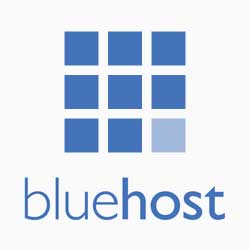Benefits vs. Overt Benefits
What Is a Benefit?
A benefit refers to the positive outcome or value that a customer gains from using a product or service. It’s the answer to the question: “How does this help me?” Benefits can be:
-
Functional: Practical advantages like saving time, reducing costs, or enhancing efficiency.
-
Emotional: Intangible gains such as feeling secure, confident, or happy.
Example: For a noise-canceling headphone, a benefit might be: “Experience uninterrupted music, free from ambient noise.”
What Is an Overt Benefit?
An overt benefit takes the concept of a benefit a step further by making it:
-
Explicitly Clear: Leaves no room for ambiguity.
-
Immediately Apparent: Grabs attention quickly.
-
Customer-Centric: Directly addresses the customer’s needs or desires.
Doug Hall, in his book Jump Start Your Business Brain, emphasizes that an overt benefit should be so evident that it “hits people between the eyes” (abravenew.com, secretpmhandbook.com, marketingscoop.com, zenbusiness.com). It’s about articulating the benefit in a way that the customer instantly understands what’s in it for them.
Example: Instead of saying, “Our headphones have noise-canceling technology,” an overt benefit would be: “Block out 95% of background noise to enjoy your music in peace, even in the busiest environments.”
Why the Distinction Between Benefit and Overt Benefit Matters
Understanding and leveraging overt benefits can significantly impact marketing effectiveness:
-
Clarity: Customers quickly grasp the value proposition.
-
Differentiation: Helps distinguish your product in a crowded market.
-
Conversion: Clear benefits can lead to higher sales and customer engagement.
Research indicates that products with a high overt benefit have a greater probability of success compared to those with low overt benefits (aspirekc.com, chegg.com).
Crafting Overt Benefits: A Simple Framework
To transform a general benefit into an overt one, consider the following steps:
-
Identify the Feature: What does your product or service do?
-
Determine the Benefit: How does this feature help the customer?
-
Make It Overt: Articulate the benefit in a clear, specific, and compelling manner.
Example:
-
Feature: 10-hour battery life.
-
Benefit: Longer usage between charges.
-
Overt Benefit: “Enjoy up to 10 hours of uninterrupted music on a single charge—perfect for your daily commute and beyond.”
Examples:
Base benefit:
- “One-time payment.”
That means the customer pays once and isn’t billed again.
Overt benefit (sharpened & specific):
“Pay once today—no recurring fees or surprise bills ever.”
This overt benefit:
- Spells out the value clearly (“no recurring fees”).
- Addresses a key pain point (annoyance of subscription charges).
- Is immediately understandable and compelling.
Additional variations that emphasize different angles:
- “One-time payment—own it forever, no subscriptions required.” (Ownership and freedom)
- “Pay once and save—no monthly charges eating into your budget.” (Cost‑savings clarity)
- “One upfront payment, zero surprises—clear, simple, yours.” (Transparency and simplicity)
By converting “one‑time payment” into an overt benefit, you’re not just stating a fact—you’re communicating the specific, immediate value to the customer in a way that resonates and sticks.
Here’s a bold and compelling overt benefit of automated income streams for affiliate marketers:
Earn While You Sleep – Literally
Set it up once, and it keeps paying out.
With the right automation, your affiliate campaigns—email funnels, evergreen content, traffic ads—work 24/7 without you having to lift a finger. People land on your site, click your affiliate links, and commissions roll in while you’re sleeping, traveling, or living your life.
Scale Smarter — Exponential Growth Awaits
More income, less upkeep.
Automation tools like email sequences (via ConvertKit/Mailchimp), AI-generated content, and affiliate dashboards free up your time while maximizing ROI. Users report up to 80% more leads and 77% higher conversions, with nearly $5.44 earned for every $1 spent on automation.
“Set, forget, and profit.”
Stop trading hours for dollars—build systems once, then crush it on autopilot, night and day.





Comments